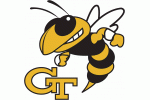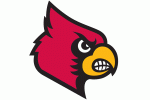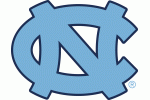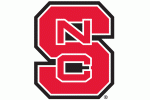Fans look closely at college basketball and NFL games. They think hard about each play. Every pass, defense move, and coach's call is checked for how well it works. This happens a lot in leagues like the ACC and pro football. Watching sports helps people understand tricky situations in other parts of life. It connects being a fan to thinking about plans and ideas in general.
Deconstructing Basketball Playbook Execution
People who follow basketball watch team plans closely. This is very true in tough leagues like the ACC, where coaching plans matter a lot. Using a certain defense, like a 2-3 zone, causes much talk. It depends on how well the other team shoots from far away and gets into open spaces. Some teams try to score fast after getting the ball back. This needs speed, good passes, and players knowing where to go.
Certain plays, like setting screens for a teammate (pick-and-roll) or running plays with lots of passing and moving, change based on player skills and how the defense plays them. Coaches carefully plan ways to get easy shots near the basket or open shots from far away. Defenses try to mess up the other team's favorite plays using pressure or different player matchups. These different plans make watching the game more interesting.
The point guard starts the offense and controls the game's speed. The center protects the basket area and gets rebounds. Choices are made quickly during the game. Teams have to change plans based on how the game is going, player fouls, or what the other team does. Winning often comes from playing hard and following the plan under pressure. Good teamwork on both offense and defense is key. People are watching like seeing all the planning. Sometimes, they compare it to figuring out patterns in an online pokies casino.
Examining Football's Tactical Chess Match
Pro football is like a complex game of chess played with people. Each week, the offense and defense try to outsmart each other. Coaches on offense carefully make plans to attack weak spots they see in the defense. They use different player groups and movements before the play starts to get an edge. Plays that look like runs but are passes, short passes to quick players, and different ways of blocking for runners are used to keep the defense guessing.
On the other side, defensive coaches change their players' positions and how they cover receivers. They use surprise attacks (blitzes) or tricks to confuse the offense and bother the quarterback. Using the clock wisely is very important, especially near the end of the first half or the end of the game. It affects what plays are called and how teams manage the situation. Big changes made by coaches at halftime often switch how the game feels in the second half.
Many viewers enjoy this smart part of football just as much as the action. Luck and skill play a part, too. This mix might feel like the chances and possible rewards found when aiming for real money casino jackpots. Websites like Vegas Slots Online offer info for people looking into digital games that involve thinking, luck, and betting, such as popular real money pokies. The careful, detailed planning needed in football is like the planning used in many other contests and hobbies.
Player Performance Metrics and Predictive Insights
Evaluating player contributions effectively in basketball and football requires blending objective statistical review with subjective observational judgment. Traditional stats like points per game, shooting accuracy (field goal, three-point, free throw percentages), assists, steals, blocks, and rebounds offer essential basketball data points.
For football, key metrics include quarterback rating, completion percentage, yards per attempt, rushing yards per carry, sacks recorded or allowed, and interceptions thrown or secured. However, these numbers alone rarely tell the full story and require context.
Intangible traits such as demonstrated leadership on the court or field, high situational awareness (game IQ), consistent effort level, ability to perform under pressure, and positive impact on team chemistry are also heavily factored into assessments made by dedicated followers, scouts, and commentators.
The Community and Culture of Sports Fandom
Loving sports builds strong communities, especially around passionate fans like those following ACC basketball or the NFL. Sharing moments, like celebrating big wins or feeling sad after tough losses, brings people together. Being loyal to a team gives people a sense of belonging. Big rivalries make the season more exciting.
Talks about game plans, great player moments, referee calls, and coaching choices happen all the time online, at home, and in public places. Being part of these talks is a big reason people enjoy being fans. It creates a common interest among different kinds of people.
The Increasing Role of Analytics in Sports Strategy
Modern sports strategy in both basketball and football is increasingly influenced by advanced analytics. Teams now employ entire departments dedicated to crunching numbers, identifying hidden efficiencies, and providing data-driven insights to the coaching staff.
In basketball, this manifests as detailed shot charts indicating optimal scoring zones, complex player-tracking data revealing defensive effectiveness, and lineup analysis showing which combinations perform best together under specific game conditions. Concepts like pace-and-space offense have gained prominence partly due to analytical findings supporting the value of three-point shooting and floor spacing.
Similarly, in the NFL, analytics impact decisions ranging from play-calling tendencies (like pass/run ratios on early downs) to crucial fourth-down decision-making, where probabilities of conversion and potential game outcomes are calculated. Teams analyze opponent tendencies with granular detail, looking for exploitable patterns in formations, personnel usage, or situational play calls.



















